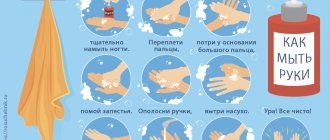Healthy food products for school-age children. - presentation
Healthy food products for school-age children
Kuchma V., 2009 Health status of schoolchildren
45% of 11-year-old children do not have breakfast either at home or at school, while they have 6-7 lessons!
7% of 11-year-old girls and 11% of boys drink alcohol at least once a week!
24% of 15-year-old girls and 44% of boys have sexual experience! Russia leads in the number of abortions among teenagers!!!
Basic principles of children's health in schools Ensuring psycho-emotional comfort of stay Formation of children's need for a healthy lifestyle Rational nutrition Preventive immunocorrection Physical education Hardening!
One of the main reasons for the deterioration of children's health is unbalanced nutrition!
What did our ancestors eat? What do we eat?
Japan National Institute of Nutrition: Vitamin C and carotene content in highly productive varieties of vegetables and fruits, incl. in citrus fruits grown using intensive agricultural technology - several times lower (!) than in wild varieties BINTI, 23 (2113) from the city.
This deficiency is observed in almost all age and social groups all year round! animal proteins polyunsaturated fatty acids vitamins macro- and microelements dietary fiber Deficiency: animal fats sugar salt Excess: Major nutritional disorders of modern man
Violation of diet 15-37% Rare consumption of: milk and dairy products 36.0-38.1% meat and meat products 33.9-38.4% vegetables and fruits 29.3-35.1% Ilyin A. G., 2005 d Peculiarities of nutrition of schoolchildren
THE MOST COMMON FORMS OF NUTRIENT DEFICIENCY IN RUSSIA AND THE HEALTH OF PRESCHOOL CHILDREN AND SCHOOLCHILDREN PRESCHOOL AND SCHOOL CHILDREN DEFICIENCY OF DIETARY FIBER AND PROBIOTICS DEFICIENCY OF VITAMINS A, E, C, -CAROTENE, MICROELEMENTS Z n, Se IRON AND CALCIUM DEFICIENCY PROTEIN AND PUFA DEFICIENCY IMPAIRED GROWTH AND DEVELOPMENT REDUCED ABILITY TO LEARN REDUCED IMMUNITY INTESTINAL FUNCTION DISORDERS
THE MOST COMMON FORMS OF NUTRIENT DEFICIENCY IN RUSSIA AND THE HEALTH OF PRESCHOOL CHILDREN AND SCHOOLCHILDREN PRESCHOOL AND SCHOOL CHILDREN CALCIUM DEFICIENCY IODINE DEFICIENCY FLUORINE DEFICIENCY IRON, COPPER, VITAMINS A, C, B 6 AN DEFICIENCY EMICARIESHYPOTHYROOSOSTEOPOROSIS
This is the correct ratio of all nutrients. What should I do? You need to eat right! What is proper nutrition?
Proteins Fats Carbohydrates Can be obtained from a balanced diet
Sources milk and dairy products meat, fish, offal beans cottage cheese, cheese eggs Proteins Requirement for children 15% of daily calories Functions Construction material Maintaining normal immunity Classification animals vegetable
Classification 1. Plant origin (oils) 2. Animal origin (butter, lard, etc.) Functions Source of energy (1g fat - 9 kcal) Participation in the development of immunity Source of fat-soluble vitamins PUFA - polyunsaturated fatty acids Sources Saturated fats: Animals fats (beef, pork, lamb, etc.), butter PUFAs: Vegetable oils (sunflower, corn, etc.) Fats Requirement for children 35% of the daily energy value of the diet
Carbohydrates Sources Bread, flour, cereals, potatoes Sugar, cookies, jam, jam, candies Fruits, vegetables, berries, honey Classification 1. Simple (sugar, carbonated drinks, refined) 2. Complex (cereals, pasta) Functions Energy Structural Need for children 50% of the daily energy value of the diet
Functions Stimulation of gastrointestinal motility Absorption of heavy metals, cholesterol... Formation of feces Acceleration of excretion of foreign substances Dietary fiber Sources Vegetables, fruits, wholemeal bread, cereals, legumes Classification cellulose, hemicellulose, pectin substances
Vitamins Macro- and microelements Standard diets, composed of traditional foods and ready-made meals that are quite sufficient in calorie content, cannot fully meet the needs of a growing body for all the necessary vitamins and minerals
Vitamins – from the Latin “Vita”, which means life
Lack of vitamins and minerals is one of the main nutritional deficiencies that adversely affects the health of children
Characteristics of the situation According to the Research Institute of Nutrition of the Russian Academy of Medical Sciences, vitamin deficiency: is typical for all regions of Russia is all-season in nature found in almost all population groups
disrupts metabolism interferes with the normal growth and development of children reduces mental and physical performance impairs immunity and resistance to various diseases contributes to the development of chronic diseases Lack of vitamins and minerals:
According to a social survey of parents conducted by the State Statistics Committee of the Russian Federation, 2007 Vitamin provision of children's diet: 80-90% 40-45% 7-15%
How much do you need to eat to get your daily requirement of vitamins? Vitamin Apples 1-2.5 kg or sweet peppers 2-4 pcs Vitamin B 1 Meat 1.5 kg or black bread 1 kg Vitamin B 2 Milk 1-2 l or cottage cheese (cheese) 0.5 kg Vitamin B 6 Meat 0 .5 kg Vitamin B 12 Milk 1.5-2 l Niacin (PP) Meat g or fish 1 kg Pantothenic acid Eggs 3 pcs or peas 300 g Folic acid Lettuce 500 g or liver 300 g Vitamin D Fish or fish oil 1 tsp. Vitamin E Vegetable oil g or nuts 75 g Vitamin A Butter 150 g or caviar 100 g Carotene Carrots with butter 100 g or herbs Calcium Hard cheese 200 g or cottage cheese 1 kg Iron Meat (beef) 350 g Iodine 4-6 g iodized salt or fish 1.5 -2 kg
Ready dish Serving size, g Vitamin C Vitamin B2 Content, mg% RNI*Content, mg% RNI* Fresh cabbage soup250 1.62.60.021.3 Beetroot salad55 -0.032.0 Boiled chicken (55g) with pasta (100g) and green peas (25g) 30.60.075.5 Rye bread30 -0.032.5 Wheat bread30 -0.011.0 Fruit and berry jelly 200 3.35.5—Curd bun46 -0.053.8 Total: 5.28.70.2116.2 O.A. Vrzhesinskaya et al. “Content of vitamins C and B2 in school lunches” Research Institute of Nutrition of the Russian Academy of Medical Sciences, Journal “Questions for Children. Dietetics" 2005 * The recommended daily intake (RDI) for children 6-10 years old of vitamin C - 60 mg, vitamin B2 - 1.3 mg was taken as 100% Content of vitamins C and B2 in ready-made school lunch dishes
Effective ways to replenish micronutrient deficiencies Effective ways to replenish micronutrient deficiencies Increasing the proportion of fresh vegetables and fruits, products and ready-made meals from whole grains, milk and meat in the diet Regular inclusion of food products and ready-made meals fortified with micronutrients in the diet, incl. : Milk and fermented milk products Bakery and confectionery products Juices, drinks, syrups and jelly, etc. Use of multivitamin preparations
CHIEF STATE SANITARY DOCTOR OF THE RUSSIAN FEDERATION REGULATION N 9 Moscow On additional measures to prevent diseases caused by micronutrient deficiency…. 5. Before the Center for State Sanitary and Epidemiological Standardization, Hygienic Certification and Expertise of the Ministry of Health of Russia prepare and publish a register of sanitary and epidemiological reports on premixes with vitamins and microelements. ... CHIEF STATE SANITARY DOCTOR OF THE RUSSIAN FEDERATION REGULATION On the organization of nutrition for children in educational institutions ... 1.1. Take additional measures aimed at providing schoolchildren with hot meals, food products enriched with complexes of vitamins and minerals, provide for the allocation of the necessary funds to provide for children of all age groups attending educational institutions, as well as to equip the catering units of educational institutions with modern refrigeration and technological equipment. … …3.2. Optimize children's diets and, first of all, food products enriched with vitamins and micronutrients. ...
Products enriched juices juices nectars nectars drinks drinks jelly jelly syrups syrups milk milk fermented milk products fermented milk products cottage cheese porridge porridge baked goods baked goods porridge porridge fermented milk and milk fermented milk and dairy products baked goods baked goods vitamins and minerals about - and prebiotics, dietary fiber
Products enriched with vitamins
Functional nutrition Functional nutrition helps improve health and reduce the risk of various diseases
Is school meals necessary?
Population-based studies in the United States and Peru have shown that government free school breakfast programs provided improvements in learning, communication skills, and attention compared to students who did not receive school breakfasts (1983, 1989, 1996)
School breakfasts Hot meals Express meals Functional products Fortified drinks, jelly, teas Fortified baked goods “School” milk Healthy range of products in buffets Rationalization of schoolchildren’s nutrition
For “snacks,” fifth-graders in Moscow prefer Volkova L.Yu., Perelygina O.V.
Do you need breakfast at home?
Observations of 29 English schoolchildren showed that going to school without breakfast or having a sweet drink instead of breakfast led to a significant decrease in attention and memory scores. These phenomena were absent if children received ready-made breakfast cereals in the morning. * Wesnes K.A., Pincock C., Richardson D. Et al Appetite v.41
Clinical testing of fortified products
Dynamics of the incidence of acute respiratory infections and influenza in children of the Romodanovsky kindergarten (Mordovia) when taking the Valetek drink and jelly 2007 As a result, the number of days missed due to illness in the main group was 2-3 times lower than in the control group! Center for Preventive Medicine, Saransk, 2007
Dynamics of the level of development of children in the main group of preschool educational institution 18 while taking the drink and jelly “Valetek”, municipal district Ruzaevka Improvement of cognitive functions a) main group b) comparison group Indicators characterizing the activity of cognitive processes have significantly improved
Reduction of fatigue Comparative results of the tolerability of the orthostatic test in the main and comparison groups while taking Valetek drinks and jelly, Saransk main group comparison group Report of the NMR MRIO, Saransk, 2008 Fatigue in children while taking Valetek drinks was 7-10% below!
Dynamics of the level of academic performance (quality) against the background of fortification with Valetek drinks and jelly, Saransk, 2007 Improvement in academic performance Report of the NMR MRIO, Saransk, 2008 The academic performance of children while taking Valetek drinks was 13% higher!
6.0* 8.0* 130* 15* 0.85* *) Lower limit of normal Vitamin B 2, ng/ml Vitamin B 6, ng/ml Hemoglobin, g/l Color indicator before after 2.08±1, 09 5.17±0.6 123±2.9 0.81±0.02 5.64±1.32 7.01±0.6 131±2.6 0.85±0.02 Ferritin, µg/ l 14.7±4.1 17.1±4.4 Inclusion in the diet had a noticeable effect on the supply of vitamins, their concentration in the blood increased by 2.4 times, and the proportion of children with vitamin deficiency decreased by 1.5 times. A clinical effect was observed, manifested in an increase in the level of hemoglobin and iron in the blood, as well as an improvement in other biochemical parameters (ferritin, color index). The influence of consumption of bread fortified with a vitamin-mineral premix on the provision of vitamins and iron among Moscow schoolchildren
CNS, IMMUNE SYSTEM AND VITAMINS t The nervous and immune systems are in a state of close interaction. t Regular vitamin supplementation has a positive effect on the child’s immunity, increases resistance to infections, optimizes physical development, improves neuropsychic activity, stimulates cognitive processes, thinking and learning ability.
Iodine deficiency Research Institute of Endocrinology, Russian Academy of Medical Sciences
Decreased mental abilities Goiter Cretinism Epidemiology of iodine deficiency diseases Research Institute of Endocrinology RAMS
The World Health Organization and the UNICEF Children's Fund recommend the use of iodized salt as the most reliable and effective mass means of replenishing iodine deficiency. The use of iodized salt, instead of regular salt, in the amount of 4-6 g per day completely provides the human body with the necessary amount of iodine (mcg)
Perception Motor Speed Memory Attention 100% 83% 65% 58% 70% 44% 82% 94% 79% 80% Successful schoolchildren in an area with sufficient iodine supply Successful schoolchildren in an iodine-deficient region Underachieving schoolchildren in an iodine-deficient region Indicators of cognitive functions of children of primary school age
The frequency of teenage hypertension among Moscow schoolchildren over the period. increased by 1.6 times. Center for Hygiene and Epidemiology, Moscow, 2005!
Healthy salts
“Milk is an amazing food prepared by nature itself” I.P. Pavlov
FERMENTED MILK PRODUCTS normalization of intestinal microflora normalization of intestinal microflora stimulation of the immune response stimulation of the immune response regulation of intestinal motor activity regulation of intestinal motor activity high nutritional valuehigh nutritional value increased protein digestibility increased protein digestibility reduced lactose content and sensitizing properties (compared to whole milk) reduced lactose content and sensitizing properties filling properties (compared to whole milk) source of protein, calcium, source of protein, calcium, vitamins A, B2 vitamins A, B2 prevention prevention of osteoporosis osteoporosis regulation of acid-regulation of acid-base balance in alkaline balance in the body body MILK
SENILE OSTEOPOROSIS IS A CHILDREN'S DISEASE S.E. DENT
CHANGE IN BONE MASS WITH AGE
RECOMMENDED QUANTITY OF MILK AND DAIRY PRODUCTS IN THE DAILY DIET OF CHILDREN OF DIFFERENT AGES IN ORGANIZED COLLECTIVES Products Age, years milk liquid fermented milk products cottage cheese cheese
FOOD SOURCES OF CALCIUM Product Amount of product containing calcium RNP (mg) Ca content in the product, mg/100 g g g g Hard CHEESE MILK, FERMENTED MILK PRODUCTS g soft processed g COOK COOK, 0 - 6.00 kg BREAD, 5 - 6.0 kg FISH, 0 - 12.0 kg MEAT, POULTRY 108.0 - 12.0 kg POTATOES, 5 - 6.0 kg VEGETABLES, BERRIES, FRUIT, 5 - 1.2 kg BEANS, PEAS g SOY
Yu.N. Gutov, V.M. Poznyakovsky “The influence of a drink enriched with vitamins and minerals on mineral metabolism in disabled children with musculoskeletal disorders” “Nutrition Issues” 1/2005 Increased calcium levels in the blood of children - disabled people with musculoskeletal disorders when using the “Golden Ball” drink with calcium and magnesium Results: in addition to improving calcium supply, in the main group there was a positive effect of the drink on the psycho-emotional state and an increase in motor activity in physical therapy classes. 30 children of different ages with various cerebral palsy were examined gravity. The main group (20 people) received the “Golden Ball” drink with calcium and magnesium in the amount of 2 glasses per day. Calcium levels were assessed (calcium in the blood, other biochemical parameters).
Fats and sweets Consume from time to time! Milk and dairy products 2 - 3 dishes daily Vegetables 3 - 5 types daily Meat, fish, poultry, Eggs, beans and nuts 2 - 3 dishes daily Fruits 2 - 4 types daily Cereals, grains, flour products 4 - 5 or more dishes daily
Recommendations for parents: Child's diet - at least 4 times a day Moderate visits to fast food establishments Continuity of home and school meals When purchasing food for the home, preference should be given to fortified products
The habit of eating in front of the TV or while reading. The habit of eating at night or sleeping immediately after eating NOT having breakfast The habit of eating foods rich in carbohydrates and fats The habit of certain foods - one-sided nutrition Common HARMFUL family eating habits
The child will eat the same thing as YOU. Pay attention to family meals! Insistently, but not forcefully, offer your child new foods and dishes Beautiful table setting and dishes improves appetite Fairytale therapy for foods Friendly atmosphere and your personal example How to teach a child to new foods?
ensuring their health and resistance to the effects of infections and other external adverse factors helps to improve the perception of educational material. Optimal nutrition of children is a necessary condition:
Be healthy!
Presentation on the topic “Healthy and harmful products”
#8th grade #Technology #Teaching and methodological materials #Presentation #Subject teacher #School education
Completed by students of the Municipal Educational Institution "Secondary School No. Karymskoye" 8th "b" grade: Ksenia Nepomnyashchaya and Diana Tkacheva Useful and harmful products
Harmful products
chewing gum These products can hardly even be called food products, because they consist almost entirely of food additives: sweeteners and sugar substitutes, stabilizers, thickeners, emulsifiers, antioxidants (antioxidants) and food coloring.
Chips and French fries Chips and French fries are a highly concentrated mixture of fats and carbohydrates, coated with dyes and flavor substitutes. Due to the way they are prepared, they produce many carcinogens—substances that cause cancer.
Sweet carbonated drinks Sweet carbonated drinks are a mixture of sugar, chemicals and gases. As a rule, they contain aspartame (E951), a synthetic sweetener. But most importantly, soda does not quench your thirst. And sodium benzoate (E211), which is used as a preservative, leads to metabolic disorders and obesity.
Instant noodles Instant noodles It would seem that there is nothing harmful in the noodles. However, nothing useful either. All flavors, dyes and preservatives that the seasoning contains have a negative effect on the human body. Frequent consumption of it threatens diseases of the gastrointestinal tract such as gastritis or ulcers.
Alcohol, even in minimal quantities, interferes with the absorption of vitamins. In addition, alcohol itself is very high in calories. It’s probably not worth talking about the effect of alcohol on the liver and kidneys; you already know everything very well. And you shouldn’t rely on the fact that a certain amount of alcohol is beneficial. All this occurs only with a reasonable approach to its use (rather rarely and in small doses).
Chocolate bars Chocolate bars are a huge amount of calories combined with chemical additives, genetically modified products, dyes and flavors. Remember the Snickers boom of the perestroika period. A huge amount of sugar makes you eat bars again and again
Healthy foods
berries Berries slow down the aging process of the human nervous system. Blueberries and blueberries are very healthy foods for those who suffer from diseases of the cardiovascular and digestive systems, and cancer. They are also indispensable for obese people and diabetics, as they can reduce cholesterol and blood sugar levels.
nuts Nuts are a source of large amounts of vitamins, minerals, proteins, and healthy fats. These healthy foods, when consumed daily, are good for the prevention of cardiovascular diseases, diabetes, anemia, and vision problems. It has also been proven that nuts are a healthy food for stress, depression, loss of strength, and general body tone.
legumes Legumes Soybeans, beans and peas contain large amounts of protein and coarse fiber. This makes them useful products for patients with diabetes, atherosclerosis, people suffering from obesity, diseases of the digestive system, kidneys and liver, and those with a weak immune system. Legumes are able to supply the human body with proteins without accompanying fat.
fruit Apple fruit is used for the prevention and treatment of the cardiovascular, digestive, urinary, immune systems, skin diseases and musculoskeletal system. Reduce cholesterol and blood sugar levels, slow down the growth of cancer cells. Other fruits were also included in the list of “The Healthiest Foods”: kiwi and persimmon, pineapple and pomegranate, apricot and banana, avocado and mango.
vegetables Vegetables Spinach, lettuce and cabbage are good for the intestines, slow down the growth of tumors, have a diuretic effect, and are useful for hypertension, obesity, tuberculosis, and atherosclerosis. Carrots strengthen the immune system, improve intestinal function, have a positive effect on the retina, are used to prevent heart, kidney and liver diseases, and have wound healing and anti-inflammatory effects.
Milk and fermented milk products Milk and fermented milk products Calcium contained in milk strengthens bones, teeth and hair. Milk is also recommended for cardiovascular diseases, anemia, edema, and various diseases of the gastrointestinal tract (gastritis, peptic ulcer). Milk has proven itself well against various poisonings. As for fermented milk products, kefir and cottage cheese have a beneficial effect on the intestines and digestive system.
Seafood Seafood The first place among them is occupied by fish: salmon, tuna, sardines. Having a beneficial effect on the cardiovascular system, fish significantly reduces the possibility of various heart diseases. They are recommended to be eaten by people who have problems with the stomach, thyroid gland, or excess weight. Fish helps to activate the brain, speed up the healing of wounds, and prevent the formation of cancer cells.




